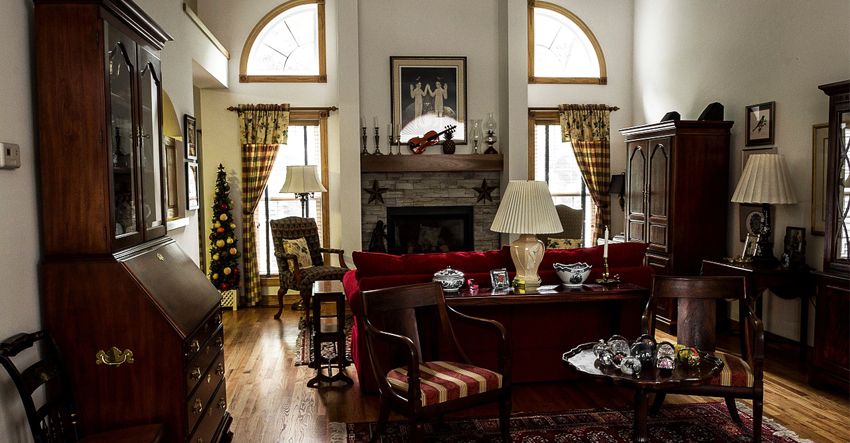

“Mom, Your Home Looks Just Like You!”
Making Home Feel Like You
Deb has always enjoyed classic, elegant home décor. She proudly displays the many antique plates that she’s collected since college, and she always has fresh flowers on the table.
Living with the effects of a stroke, Jeff moved into a smaller place. But he brought along his huge record collection and his turntables. “It’s a little crowded,” Jeff admits. “But I never get tired of spinning my platters!”
For 50 years, Carolyn has kept up with the latest home decorating styles. Out-of-date furnishings usually end up at the resale shop. “But what if it comes back into style?” her daughter always asks, and Carolyn responds, “If it comes back into style, I’ll buy it again!”
You can tell a lot about a person by looking at their living space. And experts say the older we are, the more our homes reflect our personality.
Researchers at the Texas Aging and Longevity Center at the University of Texas at Austin gave personality tests to 286 older adults and photographed their living spaces. Independent evaluators rated the rooms for characteristics such as brightness, cleanliness and newness.
The results of the study, released in July 2021, showed that certain personality traits were reflected in the seniors’ home décor. For example, extroverts tended to have more cheerful surroundings. “This may come from a desire to make the room appealing to visiting friends and family,” the researchers said. People who were described as “conscientious” had home décor that was comfortable and new.
The team found that having home décor that mirrored their personalities was beneficial for these seniors. “People who have a match between personality and living space report better well-being, and they feel better about their life and have a better mood,” reported study author Prof. Karen Fingerman. “Home is where we can express ourselves.”
Even beyond basic personality traits, the things in our home are a form of self-expression. We might display family photos, items we’ve collected during our travels, and artwork that is meaningful. We choose fabrics and furnishings and colors that resonate with us. Taste is individual, whether functional, funky or elegant—one person’s garish ottoman is another person’s perfect room accent!
The UT team says these findings should be kept in mind as older adults move to a long-term care facility or otherwise downsize. The decisions about which possessions to bring, even the color of a bedspread, might make a difference in the senior’s sense of well-being. And no matter how much effort a senior living community puts into creating beautifully decorated public areas, they should also allow as much latitude as possible for residents to decorate their individual, personal spaces.
The possessions and décor of home-dwelling older adults in the UT study also warranted attention. “The goal for many older adults is to grow older in their own homes, but as they encountered functional limitations, such as not being able to walk or climb stairs, their homes became out-of-date, uncomfortable, dim and cluttered,” said the researchers. “This may be because those adults have less energy to maintain their spaces.”
The study revealed one rather unexpected finding. “Surprisingly, for adults with functional limitations, clutter was associated with fewer symptoms of depression,” said Fingerman. “Clutter may represent an effort to exert control over the environment. They may also wish to keep items close at hand to compensate for mobility issues.”
Family members should keep this research in mind as they arrange for support to help older loved ones age in place. Cleaning and upgrades ideally should be gradual and collaborative. Helping a loved one reduce clutter and decide what to keep, what to give away and what to discard can be a balancing act. As the UT team notes, “What looks like clutter to one person may be an arrangement that makes an older adult more comfortable.”
And as families help their loved one make home modifications for increased home safety and security, their loved one’s taste and preferences also should be taken into account. Adding grab bars in the bathroom? Let them choose a style they like. Improving lighting? Which fixtures appeal to them? Replacing frayed throw rugs? What alternate flooring matches their taste?
Professional in-home care services also improve the odds that staying at home will continue to be a beneficial, safe choice. Professional caregivers provide personal care services, meal preparation and assistance with managing health care—and they also ensure that the home is kept clean, hygienic, and free of fall hazards. Hiring from an agency that carefully selects their caregivers and provides training will help ensure that the caregiver will be sensitive to the preferences of the client.







